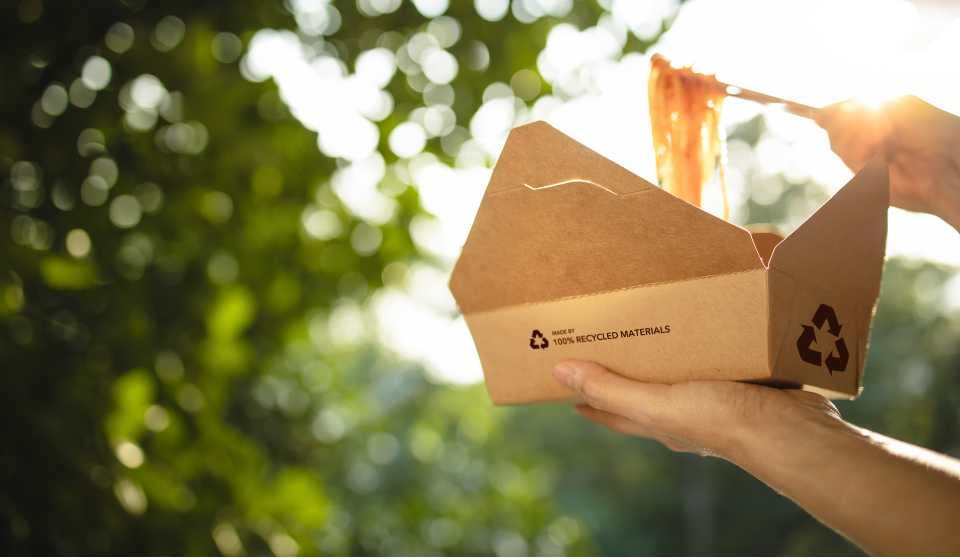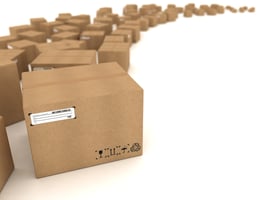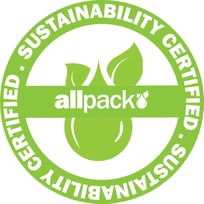The Keys to Identifying Misleading Sustainability Claims
In recent years, the world has seen a surge in environmental awareness and a growing concern for sustainability. As a result, businesses across various industries have jumped on the green bandwagon, touting their products and packaging as eco-friendly and sustainable. However, behind the glossy façade of green packaging lies the growing trend of packaging greenwashing.
Understanding Packaging Greenwashing
Packaging greenwashing refers to the deceptive marketing tactics employed by companies to portray their packaging as environmentally friendly when, in reality, they may be doing little to reduce their environmental impact.
By leveraging buzzwords and ambiguous claims, businesses manipulate perceptions, making it challenging for consumers to discern genuine eco-friendly packaging from mere greenwashing. This pervasive trend not only misleads consumers but also undermines the collective efforts toward environmental conservation. It perpetuates a cycle of misinformation and apathy, where superficial branding and suggestions overshadow legitimate initiatives aimed at reducing the environmental footprint of packaging materials.
The Dangers of Greenwashing
As outlined, packaging greenwashing not only misleads consumers but also undermines genuine efforts toward sustainability. It creates a false sense of environmental responsibility while perpetuating unsustainable practices. Worse still, it erodes consumer trust and makes it challenging for individuals and businesses to make informed choices about the products they purchase or the suppliers they work with.
Packaging greenwashing also contributes to the broader issue of green fatigue, where consumers become disillusioned with sustainability efforts due to the prevalence of deceptive marketing tactics. This fatigue can lead to scepticism and disengagement, hindering genuine progress toward a more environmentally friendly supply chain. To combat this growing issue, it's crucial for businesses to maximise transparency and authenticity in their sustainability initiatives, to foster greater trust and empower consumers to make meaningful choices when they purchase
Identifying Misleading Claims
To combat packaging greenwashing, consumers and packaging buyers need to be vigilant and critical of the sustainability claims made by businesses. Here are some key indicators to watch out for when assessing the green profile of packaging:
Vague Language
Be wary of packaging that uses vague terms like "eco-friendly" or "green" without providing specific details about its environmental attributes. It's important for consumers to question the meaning behind such terms and seek concrete evidence of sustainability efforts. For instance, instead of accepting generic labels at face value, look for packaging that provides clear information about the materials used, the production process, and any certifications obtained.
Unsubstantiated Claims
Look for credible certifications or third-party endorsements that validate the sustainability claims made by the company. While companies may advertise their packaging as environmentally friendly, it's essential to verify these assertions through reliable sources. Certifications from organisations such as the Forest Stewardship Council (FSC), the Sustainable Forestry Initiative (SFI), or the Cradle to Cradle Certified™ programme can provide assurance of a product's eco-credentials. Additionally, third-party endorsements from reputable environmental organisations lend credibility to a company's sustainability claims.
Lack of Transparency
Companies should be transparent about their manufacturing processes, materials used, and the environmental impact of their packaging. Transparency is key to building trust with consumers and demonstrating a genuine commitment to sustainability. Businesses that are forthcoming about their practices and willing to disclose relevant information foster greater accountability within the industry.
Overemphasis on Aesthetic Appeal
Sometimes, packaging may appear environmentally friendly but may lack substance in terms of sustainability. While visually appealing packaging may catch the eye, it's essential to look beyond aesthetics and assess the packaging's environmental impact comprehensively. It’s therefore vital to scrutinise whether the packaging is made from recycled materials, if it is biodegradable or compostable, and whether it is designed for easy recycling. By focusing on substance rather than surface appeal, consumers can make more informed choices that align with their sustainability values.
5 Key Steps to Verifying Green Credentials
To ensure that packaging choices align with genuine sustainability goals, consumers and packaging buyers can take the following steps:
1. Research and Educate
Take the time to research different packaging materials and their environmental impact. Dive deeper into the details of sustainable packaging by exploring the various factors that contribute to its eco-friendliness, such as material sourcing, manufacturing processes, and end-of-life disposal. Educate yourself about certifications and standards for sustainable packaging, including their significance and reliability. By staying informed, you can make more conscious decisions that reflect your commitment to environmental stewardship.
2. Ask Questions
Don't hesitate to reach out to companies and ask specific questions about their packaging practices and environmental initiatives. Engage in dialogue with manufacturers and suppliers to gain insights into their sustainability efforts, including their use of recycled materials, energy-efficient production methods, and waste reduction strategies. By seeking transparency and accountability, you can hold companies accountable for their environmental claims and encourage them to prioritise sustainability throughout their operations.
3. Look for Certifications
Seek out packaging products that carry recognised certifications such as BPI (Biodegradable Products Institute), or Global Recycled Standard.These certifications serve as tangible evidence of a product's eco-credentials and adherence to rigorous environmental standards. By choosing certified packaging materials, you can have confidence in their sustainability attributes and contribute to the demand for responsibly sourced and produced products.
4. Consider Lifecycle Assessment
Evaluate the entire lifecycle of the packaging, including production, transportation, use, and disposal, to gauge its overall environmental footprint. Consider factors such as energy consumption, greenhouse gas emissions, resource depletion, and CO2 reporting at each stage of the packaging's life cycle.
CO2 reporting involves tracking and reporting carbon dioxide emissions throughout the lifecycle of a product or packaging. It provides valuable data that allows businesses to identify areas of high emissions and implement strategies to reduce their carbon footprint. By monitoring CO2 emissions, companies can measure the effectiveness of their sustainability efforts and make informed decisions to mitigate environmental impact. Find out how Allpack can generate a comprehensive report for your business by contacting us today.
5. Support Transparent Brands
Choose to support brands and suppliers that demonstrate transparency and accountability in their sustainability efforts. Look for companies that are committed to ethical business practices, environmental responsibility, and community engagement. Seek out partnerships with transparent brands that openly share information about their supply chain, environmental policies, and social impact initiatives. By doing so, businesses vote with their purchasing power, incentivising businesses to place their focus on sustainability and contribute to positive change within the packaging industry.
Moreover, at Allpack, we are proud to be a carbon-neutral business, which means we actively offset the carbon emissions generated by our operations. In doing so, we not only reduce our contribution to climate change but also contribute to the preservation of ecosystems and the protection of biodiversity.
This commitment to carbon neutrality reflects a dedication to long-term environmental responsibility and a willingness to take tangible actions to mitigate its impacts. By choosing Allpack and other carbon-neutral companies, businesses gain confidence that they’re supporting suppliers focused on sustainability at every level of their operations.
Greenwashing Unwrapped
Packaging greenwashing poses a significant challenge in the ongoing journey for genuine sustainability. By staying informed, asking questions, and demanding transparency, consumers and businesses can play a vital role in holding companies accountable for their environmental claims. These combined efforts serve to create a culture of genuine sustainability and ensure that green packaging is more than just a marketing gimmick—it's a commitment to a healthier supply chain that benefits businesses and consumers without creating undue environmental damage.
Take the Next Steps to Sustainable Practices with Allpack
We take pride in offering a diverse selection of sustainable packaging solutions crafted to enhance your environmental footprint without compromising on functionality. Explore our website to discover our array of eco-conscious packaging alternatives, or reach out to us for further information or to explore customised options.
Interested in streamlining your packaging operations to minimise waste and enhance productivity? Connect with us today by calling 01543 396 700 or emailing our team of packaging specialists at sales@allpack.uk.com.



